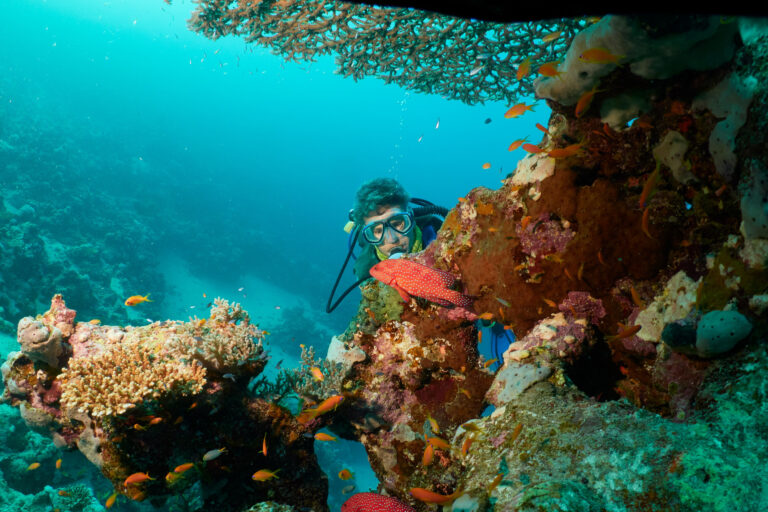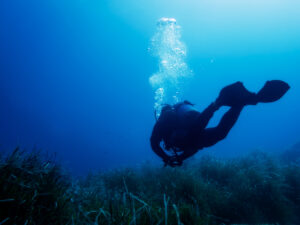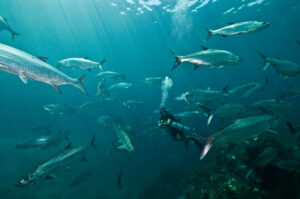What is Blind Traverse?
A blind traverse, a challenging and exhilarating aspect of scuba diving, occurs when a diver navigates through a cave from one entrance to a different, unfamiliar exit. This type of diving requires specialized skills, training, and equipment to ensure the safety and success of the diver. In this entry, we will explore the history, techniques, equipment, and safety precautions associated with blind traverse diving.
History
Cave diving has been practiced for centuries, with early instances involving breath-hold diving to explore underwater caves. However, the development of modern scuba diving equipment in the mid-20th century allowed divers to venture further and deeper into underwater caves. Blind traverses became more prevalent as divers sought new challenges and discoveries within these mysterious subterranean worlds.
Techniques
Performing a blind traverse requires the diver to be proficient in various cave diving techniques, including buoyancy control, trim, propulsion, and navigation. Moreover, the diver must have a solid understanding of the cave system they are exploring and the ability to read and interpret cave maps accurately.
Buoyancy control
Maintaining proper buoyancy is crucial in cave diving, as it minimizes contact with the cave walls and sediment, reducing the risk of disorientation due to reduced visibility. Cave divers often use a combination of dry suits, weight systems, and BCDs (buoyancy control devices) to achieve precise buoyancy control.
Trim
The diver’s body position, or trim, is critical for maintaining stability and reducing drag in confined spaces. A horizontal position with a slightly upward angle of the head is preferred, allowing for a streamlined profile and efficient propulsion.
Propulsion
Due to the often narrow and silty nature of caves, cave divers use specialized propulsion techniques, such as the frog kick, modified flutter kick, or helicopter turn, to minimize disturbance to the environment and maintain visibility.
Navigation
Navigating an underwater cave is a complex and potentially hazardous task. Cave divers use guideline systems, consisting of permanent or temporary lines, to maintain a continuous reference to the cave entrance. In a blind traverse, the diver must carefully follow the guideline while also referencing their knowledge of the cave’s layout to reach the unfamiliar exit.
Equipment
Blind traverse diving necessitates specialized equipment designed for the unique challenges of the cave environment. Key components include:
Redundant air supply
Cave divers carry at least two independent air sources to ensure an adequate air supply in case of equipment failure.
Lighting
Multiple high-powered, reliable dive lights are essential for navigating the darkness of underwater caves. Divers typically carry a primary light and two backup lights.
Guidelines and reels
Divers utilize guideline systems to navigate caves safely. These may include permanent lines installed by previous divers or temporary lines deployed by the diver themselves using reels or spools.
Cave diving computers:
These devices track dive time, depth, and decompression information, and may also incorporate navigational aids, such as digital compasses and maps.
Safety Precautions
Blind traverse diving poses inherent risks, and divers must adhere to strict safety protocols to minimize these dangers:
Training and certification
Cave diving, especially blind traverses, should only be attempted by divers who have completed specialized cave diving training and obtained appropriate certifications from recognized organizations, such as the National Speleological Society-Cave Diving Section (NSS-CDS) or Global Underwater Explorers (GUE).
Dive planning
Thorough pre-dive planning is crucial for a successful blind traverse. This includes studying cave maps, analyzing potential hazards, and establishing a clear dive plan, including objectives, route, depth limits, and turnaround times.
Team diving
Cave diving, particularly blind traverses, should always be conducted in a team, with a minimum of two divers. This ensures divers can provide assistance to one another in case of an emergency. Teams should establish clear communication methods, such as hand signals or slate writing, and have a pre-dive briefing to discuss the dive plan and contingencies.
Gas management
Divers must carefully manage their air supply throughout the dive, ensuring they have adequate reserves to exit the cave safely. A common practice is the “rule of thirds,” which allocates one-third of the air supply for the inward journey, one-third for the outward journey, and one-third as a reserve.
Emergency procedures
Blind traverse divers should be well-versed in emergency procedures, such as sharing air, locating a lost guideline, or finding a teammate in low visibility conditions. Regular practice of these procedures is essential for maintaining proficiency.
Conservation
Cave divers have a responsibility to protect and preserve the fragile cave environment. This includes adhering to guidelines for minimum impact diving, such as avoiding contact with cave formations, not disturbing sediment, and responsibly disposing of waste.
Key Takeaways
Blind traverse diving is an advanced and exciting form of scuba diving that allows divers to explore and navigate the uncharted territory of underwater cave systems. With proper training, equipment, and adherence to safety protocols, divers can safely undertake these challenging dives and contribute to the growing body of knowledge about the subterranean aquatic world. As with all forms of scuba diving, a commitment to continuous learning, skill development, and environmental stewardship is key to ensuring the long-term sustainability and enjoyment of this thrilling activity.

















